|
Dale Bryk, the Deputy Secretary for Energy and Environment in the Office of New York Governor Andrew Cuomo, gave remarks on New York’s recent energy priorities and legislation, at an OurEnergyPolicy Energy Leaders Luncheon Series panel event in New York City. She said, although New York still has a long way to go and a lot of work to do to meet its decarbonization goals, with the latest offshore wind announcement and other recent legislation, the state is finally reaching the pace of change that it needs.
“The economics are changing where we are really going full force on policy,” she said. “We do still have a lot of work to do to really unleash these subsectors of the clean energy sector, …but directionally, we are making more progress and getting onto the pace that we need to and which we have not been on until recent years….”
New York’s Energy Goals & Roadmap
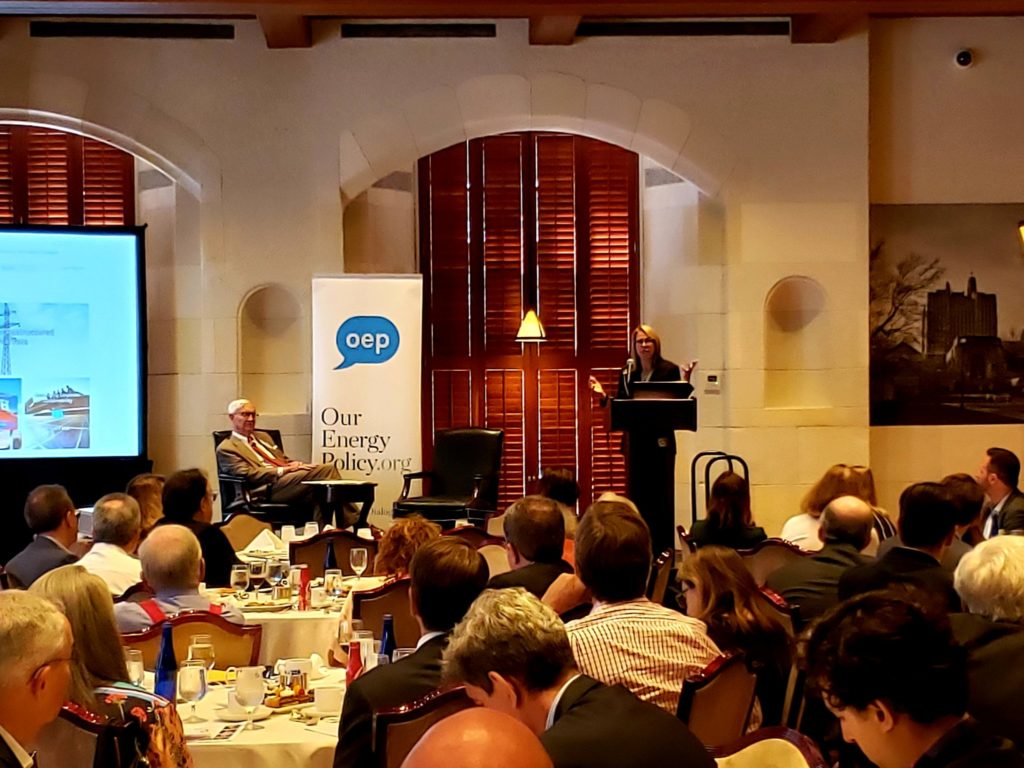 New York is implementing its own “Green New Deal,” which Bryk said will include a clean energy standard for the electricity sector of 70% clean electricity by 2030, and 100% clean electricity by 2040. These policies will be the foundation of reducing carbon emissions in the other sectors, including transportation, buildings, and the industrial sector. With these combined efforts, New York aims for a total reduction of 40% greenhouse gas emissions by 2030, 85% by 2050, and eventually 100% carbon neutrality. New York is implementing its own “Green New Deal,” which Bryk said will include a clean energy standard for the electricity sector of 70% clean electricity by 2030, and 100% clean electricity by 2040. These policies will be the foundation of reducing carbon emissions in the other sectors, including transportation, buildings, and the industrial sector. With these combined efforts, New York aims for a total reduction of 40% greenhouse gas emissions by 2030, 85% by 2050, and eventually 100% carbon neutrality.
Bryk said that her office will work with a council and several advisory groups covering different sectors to build out a roadmap for achieving New York’s ambitious energy and climate goals. Then the state agencies will work to achieve the new rules and regulations. However, she said they also are not waiting to start with the actions included in that roadmap. New York’s recent offshore wind procurement, she said, codifies some investments they will be making and is the largest procurement in the country of offshore wind. They are also working toward scaling up heat pumps and building up charging infrastructure and incentives for electric vehicles.
“We can’t wait until we have the complete roadmap to do all of that work,” Bryk said. “Much of it is already in progress. We have to merge ongoing policy activities into the roadmap discussion…. You should still keep your eye out for many, many announcements between now and the date that we have to deliver the finished roadmap.”
Semple Interview: Workforce Development & Other Energy Priorities
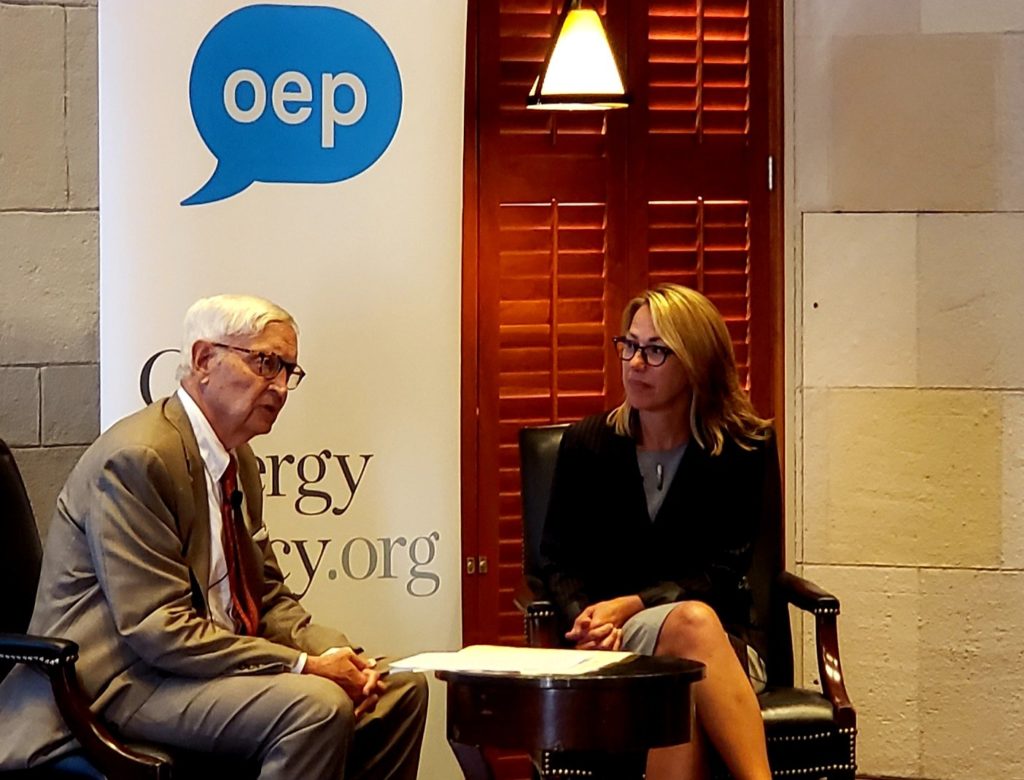 In conversation with Robert B. Semple Jr. of The New York Times, Bryk discussed several of New York’s other energy priorities along the path to achieving its broader energy goals. These priorities include increasing building energy efficiency, transitioning away from natural gas, bringing more clean energy into New York City’s municipalities, improving resilience of energy infrastructure amid a changing climate, reducing greenhouse gas emissions resulting from agriculture and land management, addressing equity issues involved in workforce development for new energy industries, and improving greenhouse gas emissions in the industrial sector. In conversation with Robert B. Semple Jr. of The New York Times, Bryk discussed several of New York’s other energy priorities along the path to achieving its broader energy goals. These priorities include increasing building energy efficiency, transitioning away from natural gas, bringing more clean energy into New York City’s municipalities, improving resilience of energy infrastructure amid a changing climate, reducing greenhouse gas emissions resulting from agriculture and land management, addressing equity issues involved in workforce development for new energy industries, and improving greenhouse gas emissions in the industrial sector.
“We are very focused on figuring out how to improve emissions performance in the industrial sector here in New York,” she said. “The industrial sector has not gotten the kind of attention that we’ve had in the other sectors, and we’re not going to just outsource our industries…. for process emissions, we really need some new thinking for how to reduce emissions.”
Bryk said they are also thinking holistically about how to make a “just transition” for employees of diminishing areas of the energy sector, knowing that jobs in coal and nuclear rely on skills not transferable to growing industries such as energy efficiency. Her team is prioritizing workforce development, both in their legislative efforts and in the way that their energy, workforce development, and economic teams are working together.
“If you only cared about creating jobs and didn’t care about climate, you would still do so many of the policies that we are doing,” she said. “[This is] not just a climate plan, but [an] economic plan for the entire state.”
Her team is also focused on equity, which she said is “front and center” in the legislation. They are working to assure that the benefits they intend to bring to the table from New York’s climate goals will also accrue to historically overburdened and underserved communities. Bryk said affordable housing is also a top priority.
Public Support & Persuasion
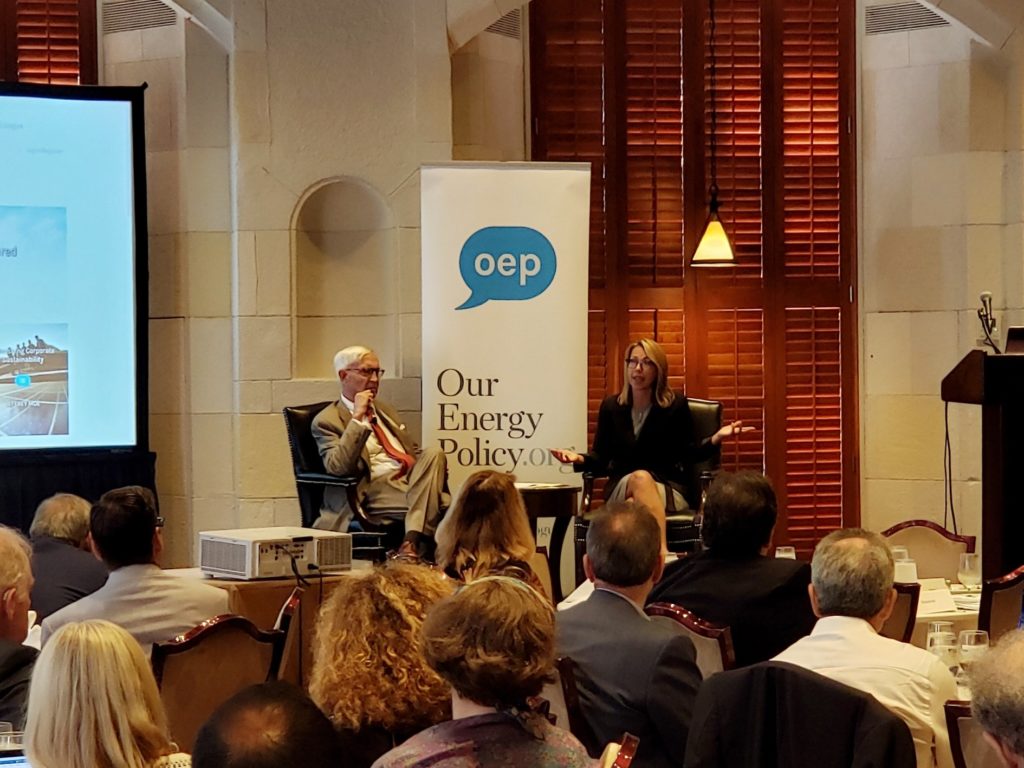 Bryk said one of the top challenges for them is persuading people—whether they be political leaders, business leaders, or the public—that their policy goals are something that they want. Bryk said one of the top challenges for them is persuading people—whether they be political leaders, business leaders, or the public—that their policy goals are something that they want.
“People have this negative view that this is just going to cost money and be about suffering…as opposed to, … our children are not going to have asthma in our schools anymore, and when you ride your bike to Midtown, you’re not going to get mouthfuls of diesel exhaust,” she said. “When people start seeing pockets of what this really looks like and what we can all have…, then it is going to be much easier to work out the policy details and figure out how to pay for it in a way that people are hugely supportive of.”
Group Discussion: Global Approach
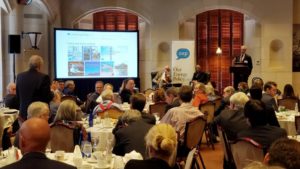 After her remarks and conversation with Semple, Bryk addressed questions from attendees on a global approach, energy conservation and efficiency, the cost of not addressing climate change, the closing of Indian Point nuclear power plant, motivating long-term thinking, and easing the approval process for renewable energy development. After her remarks and conversation with Semple, Bryk addressed questions from attendees on a global approach, energy conservation and efficiency, the cost of not addressing climate change, the closing of Indian Point nuclear power plant, motivating long-term thinking, and easing the approval process for renewable energy development.
She said in regard to America’s place in the world on climate action, that we should avoid a “climate martyr” mentality and take an approach that we want to be on the forefront to keep a competitive edge.
“We want to be first,” she said. “We want to own those markets globally. And we’re losing to them [other countries] because we’re having this stupid political fight instead of putting all of our shoulders to the wheel. Again, even if you only want to do these things for economic development and job creation reasons, there is so much that we could be working on together, [but] we are not doing as much as I think there is the potential to.”
Group Discussion: Nuclear Power
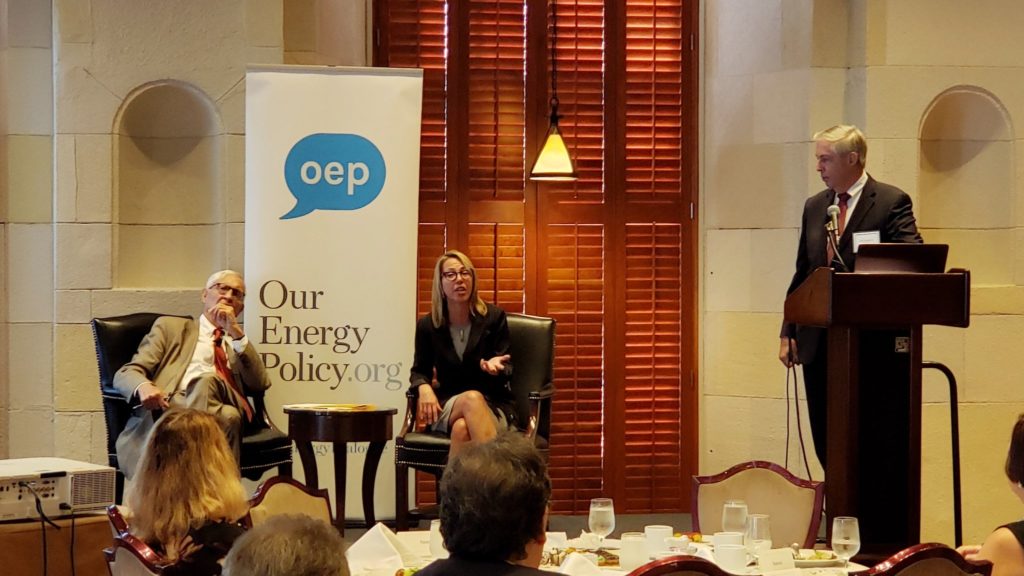 One attendee asked if Bryk could reassure them that the pending closure of the Indian Point nuclear power plant would not imminently lead to burning more fossil fuels and weakening the New York City electric grid. She said they are doing the granular, local analysis to assure that the closure of the plant does not lead to negative impacts. One attendee asked if Bryk could reassure them that the pending closure of the Indian Point nuclear power plant would not imminently lead to burning more fossil fuels and weakening the New York City electric grid. She said they are doing the granular, local analysis to assure that the closure of the plant does not lead to negative impacts.
“We have confidence at a larger level that we are getting to the goals that we have outlined and that are now legally mandated without Indian Point, and we feel very confident about that,” she responded. But I know that there is a lot of community concern.”
She also said that they support subsidizing existing nuclear power plants for the next ten years until they can confidently be replaced by renewable energy and energy efficiency. These plants would be kept online now, with a plan for their ultimate retirement.
“We want to look at all the resources on a level playing field and not pay extraordinary amounts for nuclear because that is a more familiar technology for some,” she said.
Ideas Welcome
Bryk encouraged attendees to be active in participating with her office in the formation and implementation of these energy goals and policies.
“There is no shortage of need for new ideas and big ideas and practical examples of things that are working that we need to figure out how to scale,” she said. “Over the next months and years, please be engaged and bring your ideas to the table.”
See more in our thread on Twitter. |

